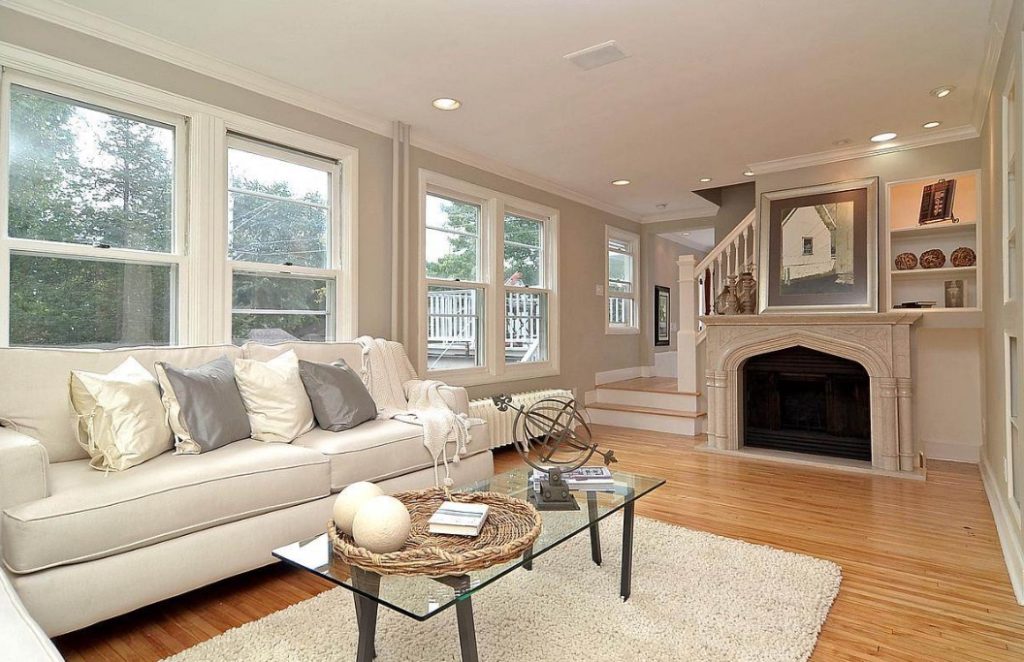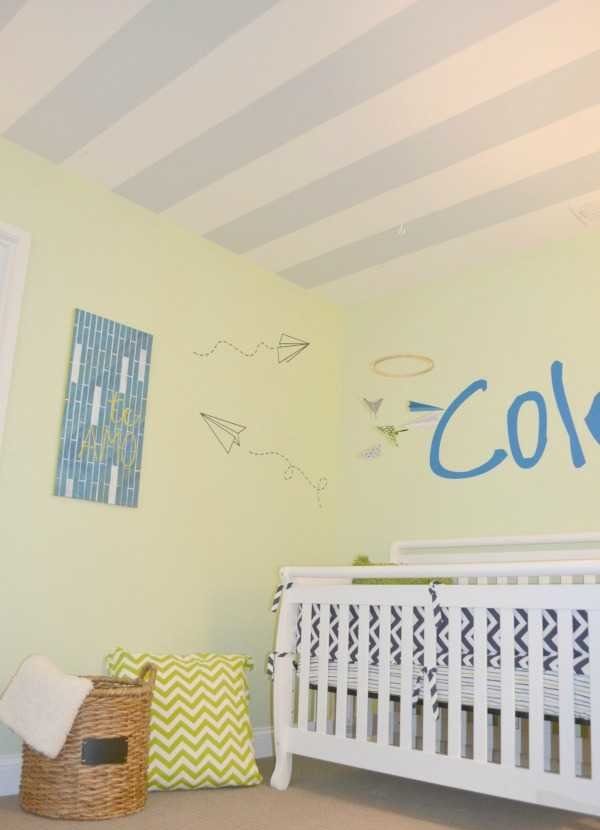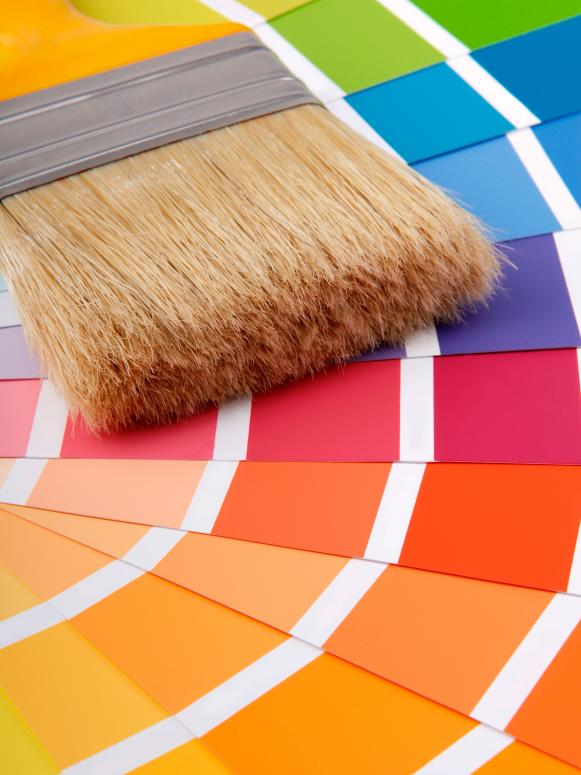Tips for Choosing Interior Paint Colors
The easiest way to choose the best interior paint colors is to start with the colors you love. When you start with the colors you love, you are not bound by the traditional color schemes for a particular decorating style. Using your favorite color as your base color, you can use it to create a color scheme around it. Your favorite colors can be the perfect inspiration for your new color palette for the whole room.
Find Paint Color Inspiration
Magazines and catalogs have always been the staple of decorating inspiration. You have access to thousands of pages of inspiration on the internet. Retailer sites can be inspiring with their room vignettes, and paint company sites can also show you ways to use color in your home. Social media sites such as Pinterest and Instagram offer color inspiration that is refreshed in real-time. Pinterest is great for creating inspiration boards for your favorite ideas, so you can keep all your ideas in one spot.
Use Color Theory to Create a Color Scheme
You don’t have to study color theory to get great ideas from a little color wheel. These inexpensive color tools can generate color scheme ideas quickly. With a turn of the wheel, you can see how colors might relate to each other and learn the basics of color theory. While you probably won’t be painting your home in the exact colors you see on the wheel, you can choose shades of those colors at your favorite paint store.
Get Creative With Neutral Paint Colors
Just because you choose neutral paint colors doesn’t mean they have to be laid-back. You can rev up your neutral color palette by being creative with how the colors are used. A striped wall in neutral colors adds tons of style but still keeps the room looking relaxed. Neutral wall color with a pastel ceiling is a sneaky way to add color without losing the soothing vibe of the space.
Pull Your Paint Color From a Print
One of the easiest ways to choose interior paint colors is to start with a print fabric. Throw pillows, bedding, and even table linens can provide you with paint color ideas. If you’re creating an accent wall, look to the boldest colors in the print. If you would like to choose a paint color that is more subtle or for a larger space, look at the color in the small details of your print fabric. Take a fabric swatch to the paint store so you can choose paint strips to view at home.

How To Select the Right Paint and Color For Your Home
Painting is a quick and cheap way to give an old room a breath of fresh air or to make your house more sellable if you are putting it on the market. Find out all you have ever wanted to know about selecting paint.
Which paint should you choose?
Paint comes in a variety of sheens as well as in either oil or latex. Latex paint is the most commonly and preferred paint type to use because of its ease of clean up and long lasting durability. It also tends to be more fade resistant and breathes better than oil, resulting in less blistering of the paint. I recommend using a latex paint for most of your walls and household uses. However, oil based paint is great for priming real wood moldings and trim as it tends to seal stains and knots from the wood better than a latex paint wood. It does take longer to dry than a latex paint though, so plan for more drying time. I personally use an oil based shellac primer on my trim and then opt for a latex paint as the top coat. There are a variety of brands on the market, but my top preference is Behr paint.
Which sheen should I select?
The glossier the paint, the easier it is to clean up. If you have small children and the room you are painting has high traffic, like in a playroom, or tends to get grease on the wall such as in a kitchen, opt for high gloss sheen as you can easily wipe the wall down with a damp sponge. This will however make blemishes and imperfections in your wall more apparent and in rooms such as living rooms, could give off an unpleasant shine. High gloss is also great for trim and will give the trim a nice finished look, complementing the flatter sheen of your walls.
Which color should I choose?
If you are in the process of selling your house, I recommend selecting a white or off-white color as the choice for walls. This will allow the buyer to easily cover the wall with their choice of color and will give your rooms a brighter and clean appearance. However, you should take full advantage of the hundreds of paint selections and brochures at your local paint store as well as talk to a salesperson about the various color schemes for the look you want. You can change the feel of any room in your house with a little planning and some color, varying the shades for a certain look or feel.
I want a subtle and soothing look:
You can choose to stay within the same shade and use a monochromatic approach such as select a variety of shades of blue for subtle color that tends to be soothing. This tends to look good in a bathroom or a bedroom if you want the feeling of calmness. Just choose your favorite color and overlap the shades. For example, select a darker color for the wall and then another in the same color scheme but different shade and slightly lighter for the trim. Your curtains, towels or bedding as well as accessories such as candles can be varying shades within the same scheme. You can also layer the colors by selecting a lighter green as the basecoat and then do a faux paint with a darker green overlay.

TIPS FOR CHOOSING THE RIGHT PAINT COLOR
Today I’m continuing my quest to making choosing the right paint color easier for all of you. Last week we talked about neutral paint colors and how to choose the right one, but you will probably still end up with a few different colors or shades that you need to decide between and that is where today’s post will help you
Don’t Pick Your Paint Color First.
I know it seems natural to get the biggest things done first, but it is much easier to choose a paint color that goes with your furniture and decor than it is to choose decor to go with a paint color.
Start With An Inspiration.
Pinterest is a great place to start when deciding on paint colors. Make a board for each room and start pinning rooms that catch your eye. Once you have about 10 you’ll get a feel for what you are drawn to color and style wise.
Stick With Neutrals.
Now I’m not saying avoid color all together. Color is good, but you have to first decide where you want the attention in a room to go. If your answer is the walls, then heck, go bold. And if you go bold on the walls everything else in the room should be pretty neutral so that you don’t end up with too many things competing. This is why bold color in a bathroom can work so well because most everything else in a bathroom is already neutral (white).
Use Testers.
Buy testers in a few colors/ shades and paint a large enough area on a few different walls so that you can see how the light hits it at different times of the day. Try your best not to test your paint against white walls cause it will throw the color off. If you have to, just do a larger test area to get a better feel.

How to Choose Interior Paint Colors
Choosing the right interior paint colors depends on the kind of room you want. Take some time to think about what kind of ambiance you want. Certain colors add weight to the room while others create a lighter tone. You can also mix colors into different shades and tints to help create more visual unity. Plan out your rooms before painting so that you can make your home’s interior pleasant no matter what colors you use.
Paint with warm colors to create comfortable, energizing rooms. Warm colors include red, orange, and yellow. The brightest tints of these colors are bold and vibrant but can be too strong when used often. More muted shades can make a room feel cozier, similar to a summer or autumn day. Warm colors work well in rooms that feature a lot of activity, such as living rooms
Choose cool colors to make a room relaxing. Blue, green, and purple are all cool colors. Cool colors can freshen up a room or help you calm down after a long day. They make for good choices in bedrooms and sitting rooms. Lighter shades can feel more vibrant, while darker shades can feel more soothing
Select neutral colors to balance out other colors. At first glance, the various shades of white and gray seem boring. In decorating, they are very useful because they fit well in any color palette. They tone down warm or light colors, but they also lighten cool or dark colors. Black, brown, and light blue are a few alternative colors that can serve as a neutral base
Opt for lighter tints in order to open up rooms. Pale yellows, blues, and whites are great choices to lighten up a room. Light colors lack visual weight, which means your eye isn’t drawn to them. When you step into the room, your eye may go to a piece of art or another bright feature. Since you aren’t focused on the exterior surfaces, rooms with light colors often feel larger than they are

Here’s How to Pick the Perfect Paint Color Every Time
Let’s face it: Picking the right paint color is important. There’s no denying the shade we pick to adorn the walls is a fundamental part of any interior design project. In fact, it’s often the element the rest of our aesthetic choices are based on.
That said, choosing the ideal shade is far from easy. There are so many options available and each one just a little different than the last. For many, it’s almost impossible to figure out where to start.
Buy textiles first
Usually when we talk about textiles, they’re considered a finishing aspect of the design, so this advice may seem counterintuitive. However, one of the easiest ways to make sure your paint coordinates well with the rest of the room is to use fabrics as your design inspiration.
Work with neighboring spaces
Odds are, you’ve experienced a house where the paint choices were truly overwhelming. As you walked from room to room it may have felt as though there was nowhere for your eyes to rest, as though the home was too busy for its own good.
Factor in lighting
Like it or not, the way in which a room is lit can have a huge impact on how the room looks. Each light temperature pulls out a color undertone, which is why rooms often feel vastly different at night than they do during the day.